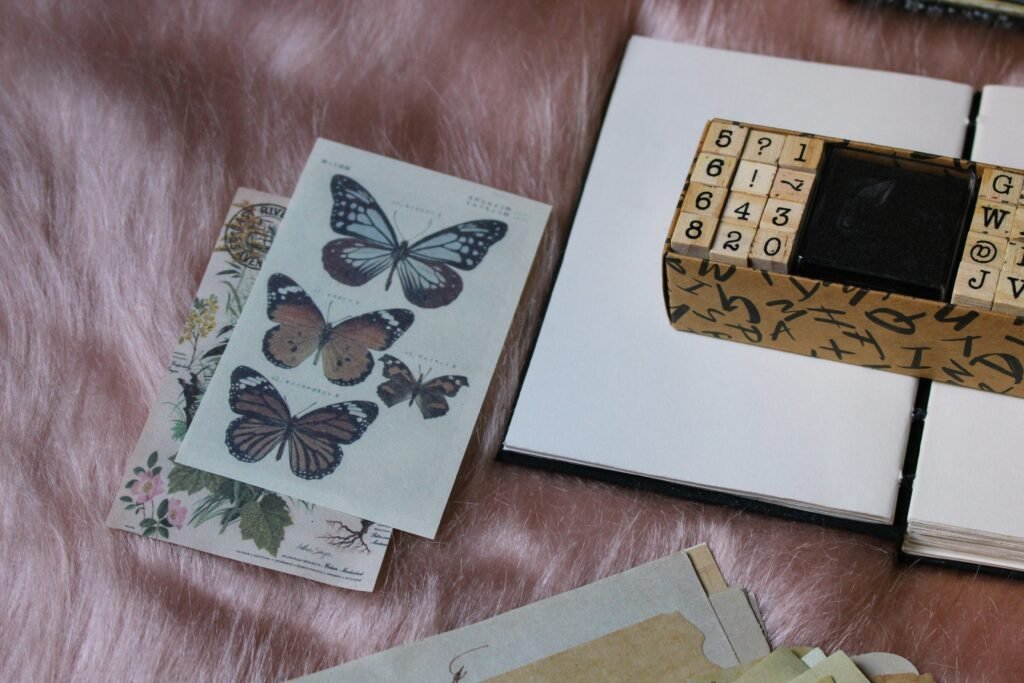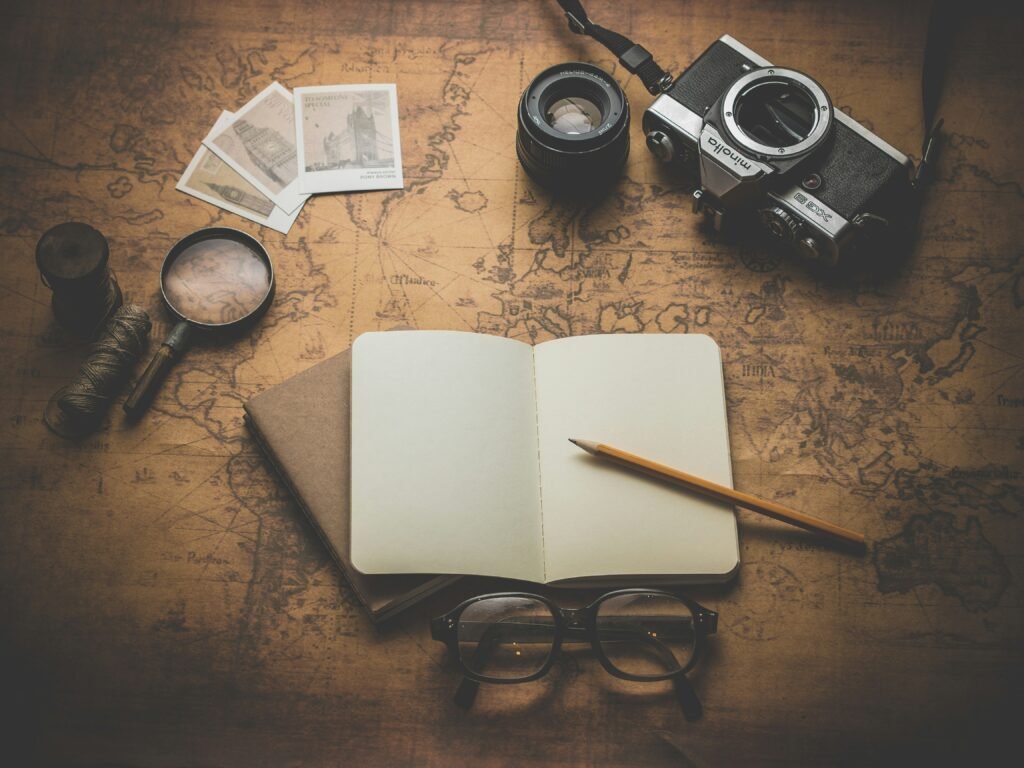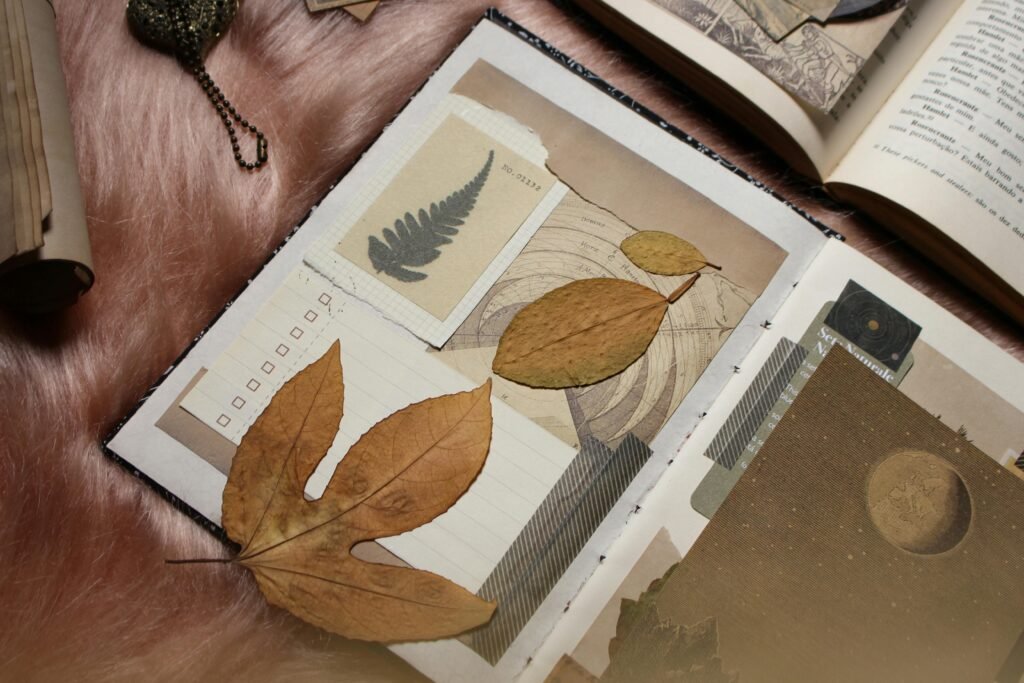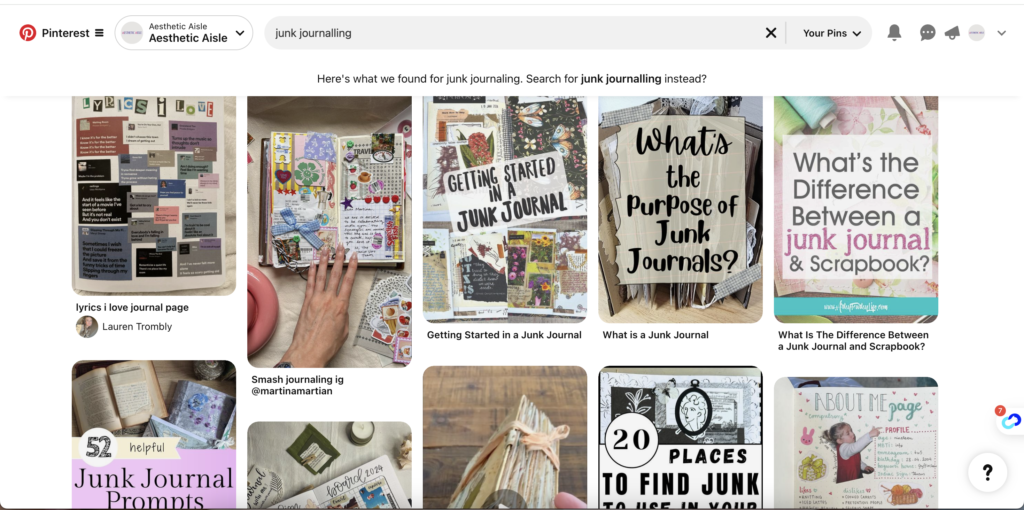Junk journaling is an incredibly creative and sustainable way to document your life while reusing everyday materials that would otherwise be discarded. With a few basic supplies and a bit of imagination, you can turn what some might call “junk” into a beautiful, personalized masterpiece. In this blog, we’ll walk you through the junk journaling process step-by-step, share essential tools and materials, and offer insights to help you get started on your junk journaling journey.
What is Junk Journaling?
Junk journaling is the practice of taking everyday materials—receipts, ticket stubs, old postcards, and scraps of paper—and turning them into creative pages within a journal. Unlike traditional journaling, junk journaling encourages a more free-form, collage-style approach where there are no rules or limits. The beauty of junk journaling lies in its diversity: every page can be different, filled with whatever speaks to you in the moment.
Why Junk Journaling?
- Eco-friendly: Junk journaling is a sustainable way to repurpose paper and other materials that would otherwise go to waste.
- Creative freedom: There are no boundaries to what you can include in your junk journal. It’s a creative space that allows you to express yourself without constraints.
- Therapeutic: Like any form of journaling, junk journaling can be a relaxing and therapeutic process, helping you reflect on your thoughts and experiences.
Getting Started with Junk Journaling
- Gather Your Supplies
To begin your junk journaling journey, collect materials that resonate with you. Some essential supplies include:
- Journals & Notebooks: Old books, spiral notebooks, loose-leaf binders, or travelers’ notebooks.
- Writing Instruments: Pens (gel, ballpoint, or felt-tip), pencils, colored pencils, markers, and brush pens for calligraphy.
- Adhesives: Glue sticks, liquid glue, double-sided tape, and washi tape for decoration.
- Cutting Tools: Scissors (regular and decorative), craft knives for precision cutting, and paper trimmers for straight cuts.

- Choose Your Journal Base
Your journal can be anything from a spiral notebook to a hand-sewn book made from old paper. The key is to choose something that feels comfortable and inspiring for you. Consider starting with a simple notebook or binder that allows for easy additions and removals.

- Create a Theme or Focus
While junk journaling is freeform, having a theme can help guide your creativity. You might focus on a specific event, a season, or even a personal goal. This can give your journal a sense of cohesion and purpose.

- Start with a Page Layout
Begin each page by arranging your materials in a way that feels pleasing to you. You might create a collage by layering different materials or simply stick down a few items to start. Feel free to play with textures, colors, and sizes! - Incorporate Words and Text
Use quotes, song lyrics, or your own reflections to add depth to your pages. You can write directly onto the pages or attach printed or handwritten quotes. This adds a personal touch and enhances the narrative of your journal. - Add Personal Touches
Include personal memorabilia such as photos, notes, or even snippets of conversations that hold meaning for you. These elements make your journal uniquely yours and can evoke memories and emotions whenever you revisit them. - Experiment and Explore
There are no rules in junk journaling! Allow yourself to explore different techniques, such as painting, stamping, or even sewing on your pages. Embrace the creative process without worrying about perfection. - Set Aside Time for Journaling
To make junk journaling a consistent practice, set aside dedicated time each week. Whether it’s 30 minutes on a Sunday afternoon or an hour on a weekday evening, find a time that works for you. This will help you establish a routine and keep your creativity flowing. - Review and Reflect
Periodically go back and look through your journal. This reflection can provide insight into your growth and creative journey. Consider journaling about your experiences as you flip through the pages, capturing your thoughts and feelings. - Share Your Journey
Consider sharing your junk journaling creations on social media or within a community of fellow crafters. Engaging with others can inspire you and provide feedback, ideas, and new techniques to explore.
Inspiring Tools for Junk Journaling
- Digital Resources: Websites and apps like Pinterest and Instagram are great for finding inspiration and tutorials for junk journaling techniques.

- Journaling Kits: Consider purchasing or creating a junk journaling kit that includes various materials and prompts to help you get started.
- Community Groups: Join online communities or local craft groups where you can connect with other junk journaling enthusiasts, share ideas, and learn new techniques.
Expanded List of Tools and Materials for Junk Journaling
- Journals & Notebooks: Old books, spiral notebooks, loose-leaf binders, or travelers’ notebooks. Buy Now
- Writing Instruments: Pens (gel, ballpoint, or felt-tip), pencils, colored pencils, markers, and brush pens for calligraphy. Buy Now
- Adhesives: Glue sticks, liquid glue, double-sided tape, and washi tape for decoration.
- Cutting Tools: Scissors (regular and decorative), craft knives for precision cutting, and paper trimmers for straight cuts.
- Rulers and Measuring Tools: Straight rulers for cutting and aligning materials; T-squares for precise right angles.
- Stamps and Ink: Rubber stamps for adding images or words, ink pads in various colors. Buy Now
- Stencils and Templates: Alphabet and number stencils for titles, decorative stencils for unique shapes and patterns.
- Punches: Hole punchers for adding holes for binding or decoration; shape punches for creating embellishments.
- Embellishments: Stickers (decorative, inspirational quotes, or themed), scrapbook paper (various patterns and textures), fabric scraps, lace, or ribbon for texture, enamel dots or gems for added sparkle.
- Personal Memorabilia: Photographs (printed or instant), postcards and greeting cards, ticket stubs from events, personal notes or letters. Buy Now
- Textures and Mixed Media: Old maps or newspaper clippings, fabric swatches or felt, paints (acrylic, watercolor), and paintbrushes, Mod Podge or decoupage glue for sealing and adding layers.
- Additional Materials: Paper bags or envelopes for storing smaller items, coffee filters or tea bags for dyeing pages, paper clips and binder clips for temporarily holding items in place.
Some best selling junk journal Kits for you:-
- Vintage Scrapbook Stickers Pack for Art Journaling
- AutoStory Paper Junk Journal&Scrapbook Kit
- RANUR 346pcs Vintage Aesthetic Scrapbook Kit with Sticker
- 200pcs Vintage Journal Supplies Pack for Scrapbook Supplies
Junk journaling is more than just a creative hobby; it’s a way to reconnect with yourself and celebrate the little things in life. By embracing the art of junk journaling, you not only recycle materials but also craft a tangible expression of your unique story. So gather your supplies, unleash your creativity, and let the magic of junk journaling inspire you to document your life in a truly beautiful way.

